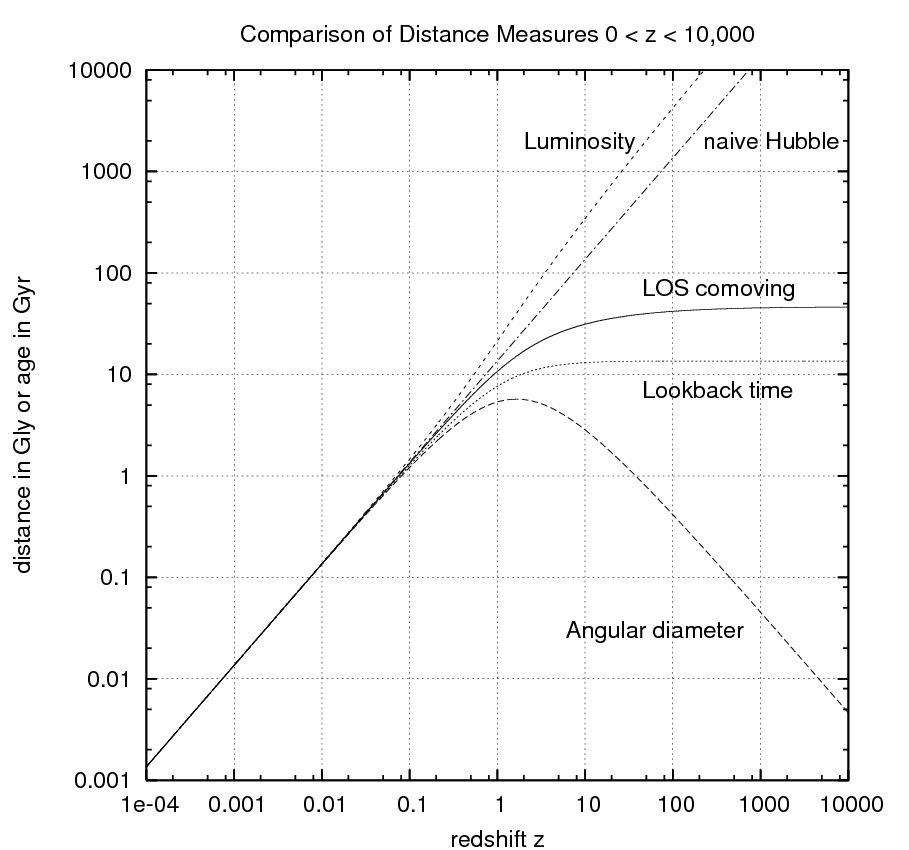Ann wrote: ↑Wed Apr 06, 2022 4:45 am
By distance I mean travel time, disregarding the fact that the expansion of the Universe has carried the distant galaxies still farther away from us since the light that reaches us from them was emitted.
Time travel distance is informative of how long it was since the object emitted the light we captured.
When all the picture we get is just a point, it's a good indicator of the distance.
For a galaxy / a galaxy cluster / a filament between voids / a spot in the CBR map, however, I think we better use the distance as it was when the object emitted the light we capture.
The diameter of a galaxy divided by the distance to that galaxy is angular size of the galaxy in the picture we get.
And this angular size is not affected by the expansion of the space.
So
that kind of distance is the most informative for a galaxy at a pic.
IMHO this kind of distance is used less than it should.
In fact there is a reason why the people are shy of it: for galaxies far, far away this kind of distance is counter-intuitively getting smaller for earlier galaxies.
Real early galaxies we get too see with greater angular sizes, or as more closely, than some later galaxies, that can be in front of the early galaxies yet are seen with smaller angular sizes, at a greater distance.
The turning point when the galaxies are seen the smallest is at z=1.5, with travel time of 6 billion years.
When we look at an earlier galaxy (possibly obscured by a 6 billion years travel time distant galaxy) we see a closer, and angularily larger galaxy. The light it emitted toward us had been getting farther away from us — for some time, till the moment of 6 billion years ago.
I mean the total amount of space between us had been expanding more quickly than the photons were travelling across.
As the photons covered, say, a million light years, the space between those photons and our place expanded, say, by a 2 million ly, so the photons found themselves 1 million ly further from their final destination.
Then the expansion of space slowed down, and after 6 billion years ago the progress of the photons became positive; in the end they reached us and made a picture of the galaxy.
